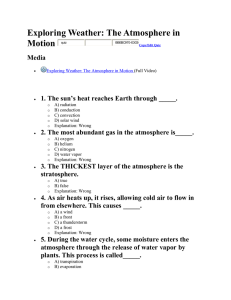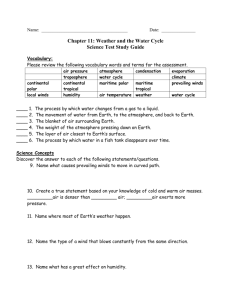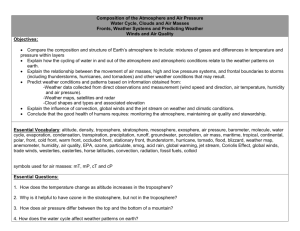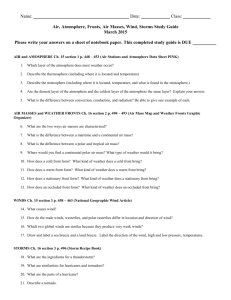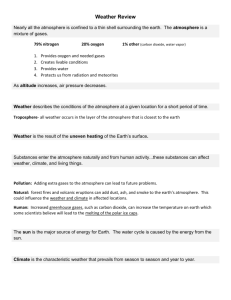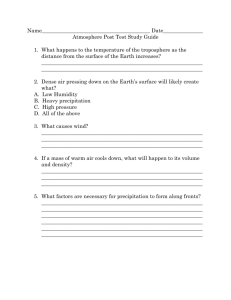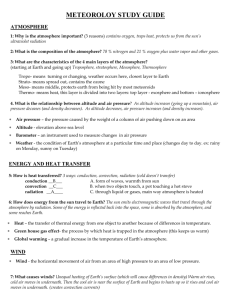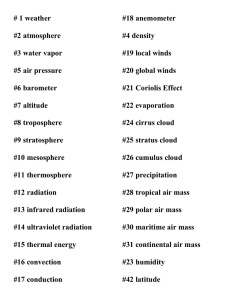air particles pressing down on a surface
advertisement
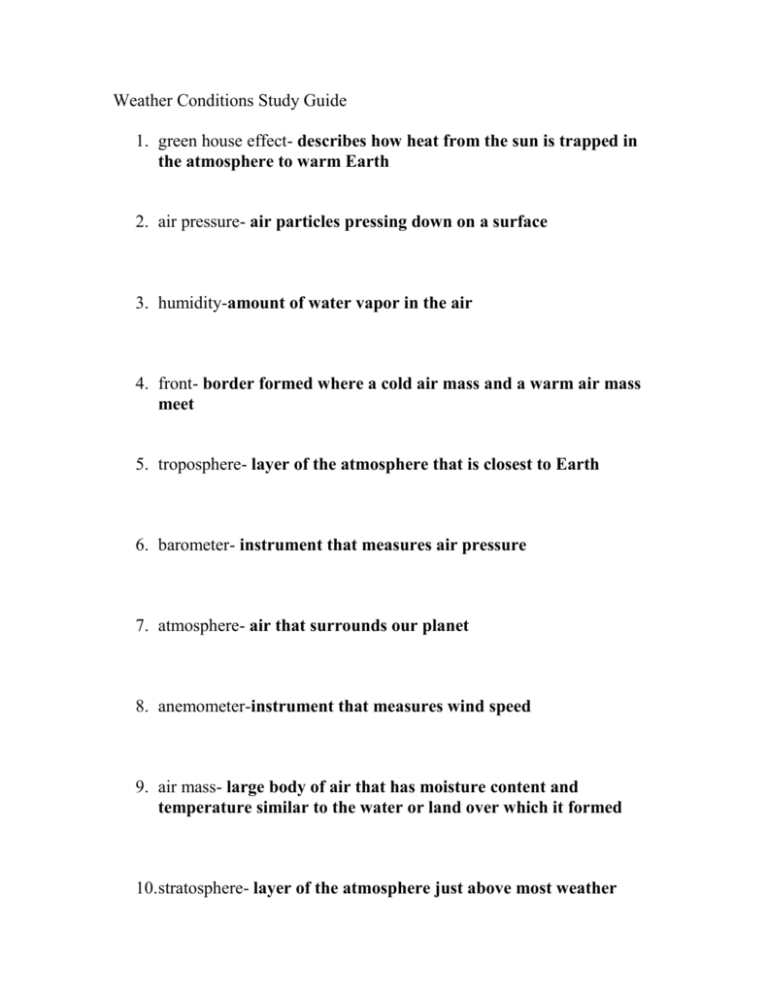
Weather Conditions Study Guide 1. green house effect- describes how heat from the sun is trapped in the atmosphere to warm Earth 2. air pressure- air particles pressing down on a surface 3. humidity-amount of water vapor in the air 4. front- border formed where a cold air mass and a warm air mass meet 5. troposphere- layer of the atmosphere that is closest to Earth 6. barometer- instrument that measures air pressure 7. atmosphere- air that surrounds our planet 8. anemometer-instrument that measures wind speed 9. air mass- large body of air that has moisture content and temperature similar to the water or land over which it formed 10.stratosphere- layer of the atmosphere just above most weather 11. What are two properties that can be used to describe air masses? Temperature and moisture 12.In which layer of the atmosphere does most weather occur? troposphere 13.What are the four layers that make up Earth’s atmosphere? Thermosphere, stratosphere, mesosphere, troposphere 14.What characteristics describe warm air? It is forced upward by cooler air and exerts low pressure. 15.What kinds of changes in weather conditions can take place? Why do these changes occur? There are changes in air temperature and pressure, wind speed and direction, and amount and type of precipitation. These change because the sun’s energy doesn’t reach all areas of Earth with the same intensity. 16.Why aren’t weather forecasts always accurate? Conditions can change unexpectedly. Air masses can form fronts, wind can change direction, and storms can appear. 17.Would there be wind without the sun? Why or why not? No. The sun’s energy does not warm Earth evenly. This causes some air to be warmer than other air, which results in areas of high and low pressure. When high-pressure air masses meet low-pressure masses, winds blow. 18.How do our bodies and senses tell us about weather conditions that are happening or about to happen? We can feel temperature, wind, and moisture with our skin; see rain, snow, clouds, changes in light, and wind blowing things; and hear gusty wind, thunder, and rain falling. Fill in the chart to show what kinds of changes you would observe along a cold front. Cold Front While Passing Winds shifting, gusty low winds Temperature sudden drop lower Air Pressure very low, then sharp rise rising steadily Rain heavy rains, thunderstorms After Passing showers, then clearing What is the standard measurement for each weather condition? 1. wind speed- km/h 2. temperature- degrees 3. precipitation- centimeters

